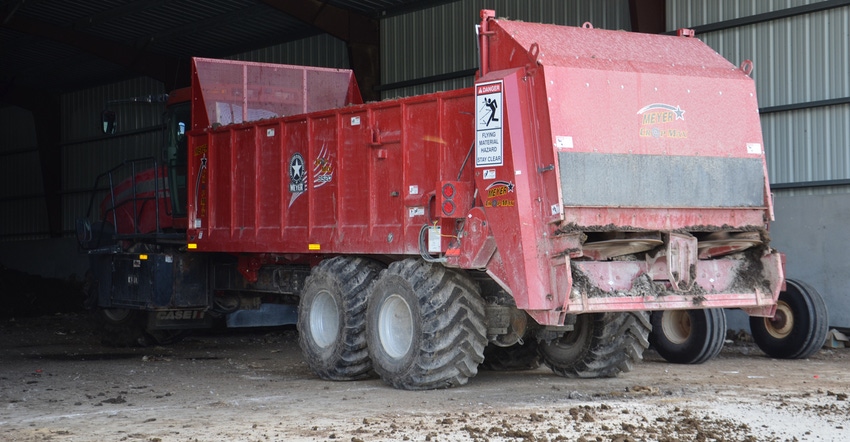October 10, 2022

Indiana is proud of its animal agriculture industry. With all livestock, manure happens. Do you have manure from your own livestock? Is manure or poultry litter available from other livestock operations? Have higher fertilizer prices piqued your interest on how to improve manure nutrient credits?
If you answered “yes” to any of these questions, it’s time to take a closer look at how you can optimize the value of manure available to you. Without doing simple things like incorporating manure after application, you may forfeit some of the benefit and value you could gain from manure.
Manure applications. Ask yourself these questions, and then find answers before applying. What is the nutrient content of the manure? What is the planned and actual application rate? How much does or can manure reduce your fertilizer bill?
Manure phosphorus credits. This is easier to realize than nitrogen; however, you’ll need current soil tests. Fields closest to manure storage have the highest soil-test phosphorus and may not need additional P for years. Fields farthest away from manure storage typically have a lower soil-test P and can use the manure P nutrients. Hauling the most nutrient-dense manure to the most distant fields helps pay for the additional hauling costs. When deciding if it pays to haul manure one field farther away from the storage, you might consider how far rock phosphate travels for spreading.
Nitrogen credits. What percent of the total N applied is used in the next cash crop? The goal is to improve the nutrient-use efficiency of manure. Use manure analysis and spreader calibration to apply the planned rate. Nitrogen is always pulling a Houdini, and it’s tough to figure out how much credit should be given. Timing and methods of applications have the greatest impacts on reducing the Houdini effect.
More nitrogen. As with all nutrient applications, apply manure as close to crop utilization as possible. Use the pre-sidedress soil nitrate test, chlorophyll meter, in-season tissue testing and end-of-season stalk nitrate testing to fine-tune your manure N credits. Don’t overapply manure based on potential N losses, and be sure to reduce fertilizer rates accordingly.
Injection or incorporation. Do you inject or incorporate manure? Surface manure applications are more susceptible to runoff and volatilization losses. But too much incorporation increases soil erosion potential and degrades soil further. If possible, inject liquid manure with low-disturbance injectors and incorporate dry manure just enough to get some manure-to-soil contact, or apply manure to a growing cover crop. If incorporating manure, remember that the purpose is to achieve that soil-to-manure contact to reduce loss, but not to do so much tillage that you encourage soil erosion.
Cover crops. Have you figured out how to use the dual benefits of manure with cover crops? Cover crops should be standard operating procedure with all manure applications. Cover crops help to capture leftover nutrients from the previous crop and nutrients applied with manure. This nutrient capture helps pay for the cost of seeding and terminating the cover crop, plus offers many other soil benefits. The only questions should be when and how to get the cover crop established in relation to the manure application.
Bailey is the state conservation agronomist with the Natural Resources Conservation Service. He writes on behalf of the Indiana Conservation Partnership. Tom J. Bechman contributed to this story.
You May Also Like




